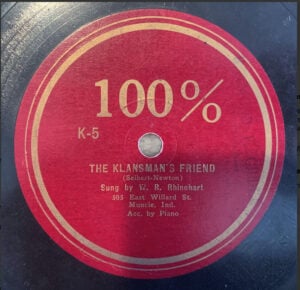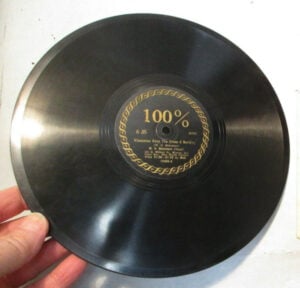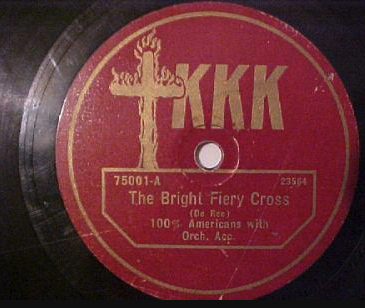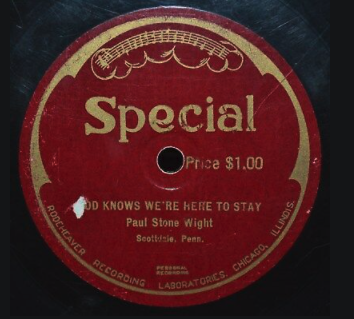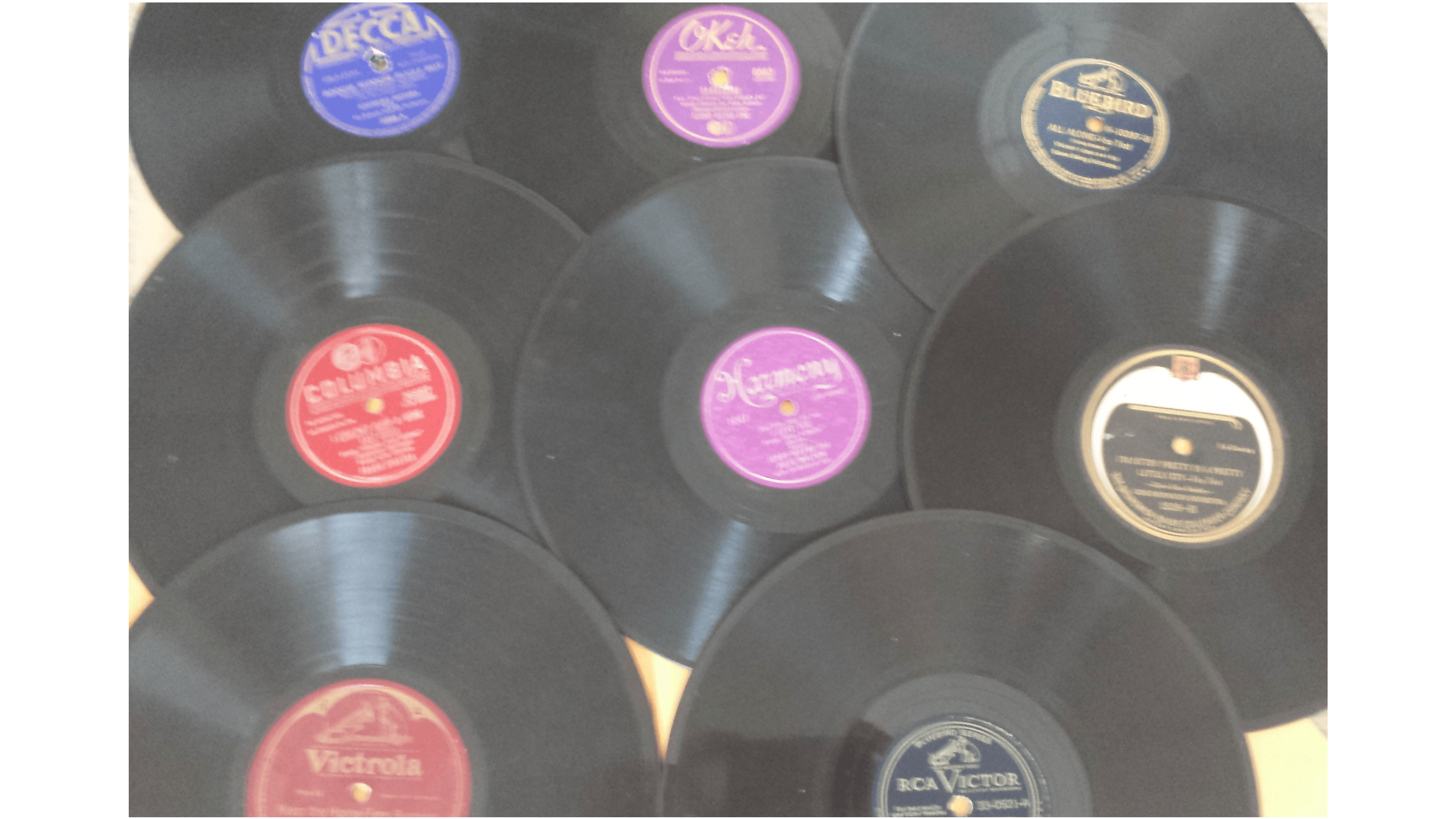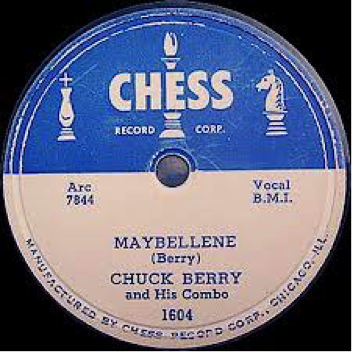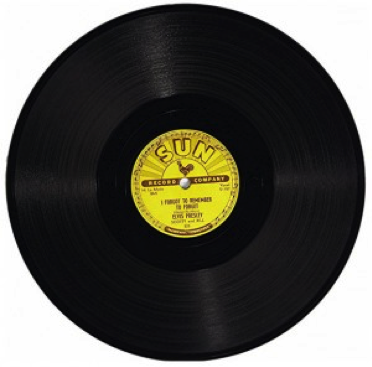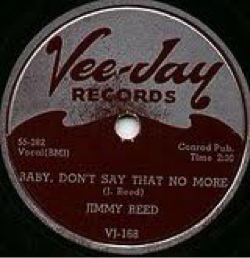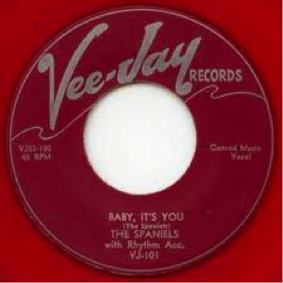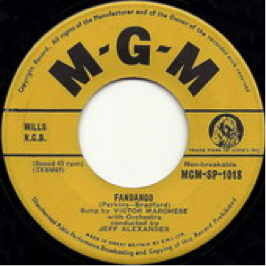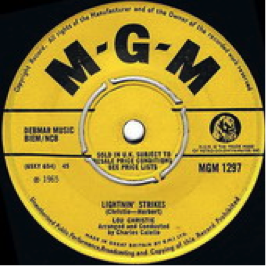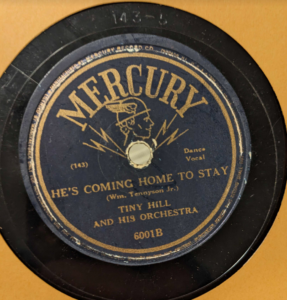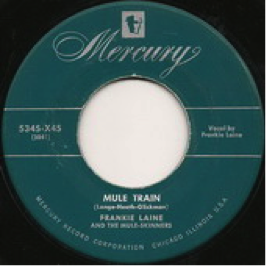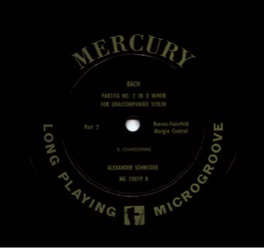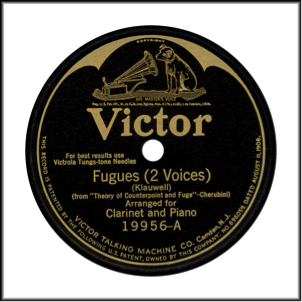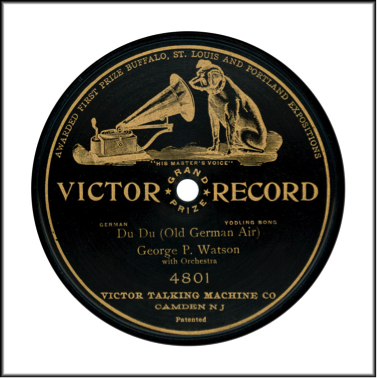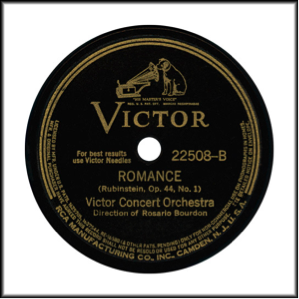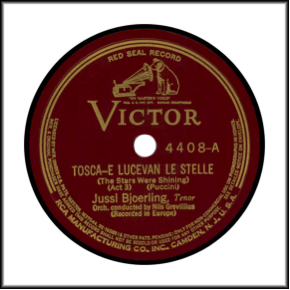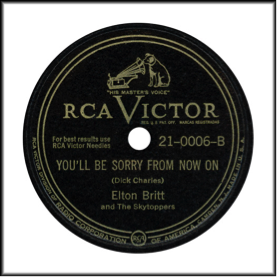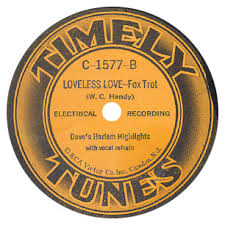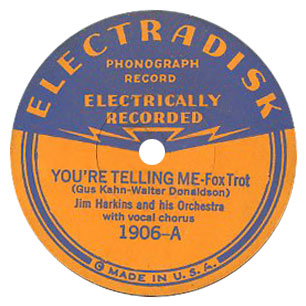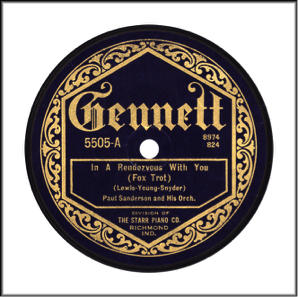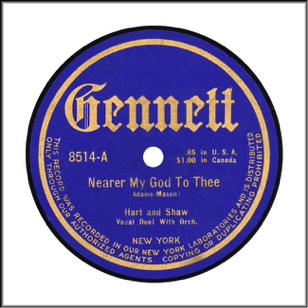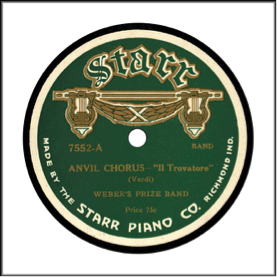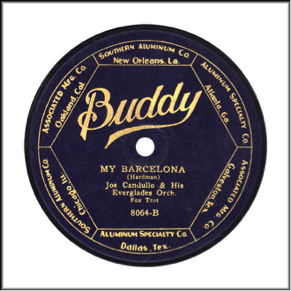Keynote Records was founded by Eric Bernay in 1937. It focused on left-wing folk music and pro-communism songs. The label included works by Woody Guthrie, Pete Seeger, and Paul Robeson. The offices for the label were at 522 Fifth Avenue, New York 18, N.Y.

In 1943, to find a wider audience, he turned to Jazz. Dinah Washington‘s recording debut was with Keynote at the end of 1943.
In 1947, the label made an attempt to manufacture its own records that didn’t go as planned, resulting in the business being acquired by Mercury Records in 1948.
One popular record by Keynote was Songs of the Lincoln Brigade. It was produced in 1937. It is a collection of songs praising the soldiers who went to fight against fascism in the Spanish Civil War.
Eric Bernay died on Nov 5th, 1968, according to his obituary in the New York Times –

Many years ago, I was traveling along the I-81 through the Shenandoah Valley in Virginia when I stopped at an antique store. Not sure of the town, but I think it was North of New Market. I found a neat 78 record set in mint condition. As well as a few single records.
The 78 record set was The Red Army Chorus of the USSR conducted by Alexander Vasilyevich Alexandrov. It is Keynote Records Album number 103.
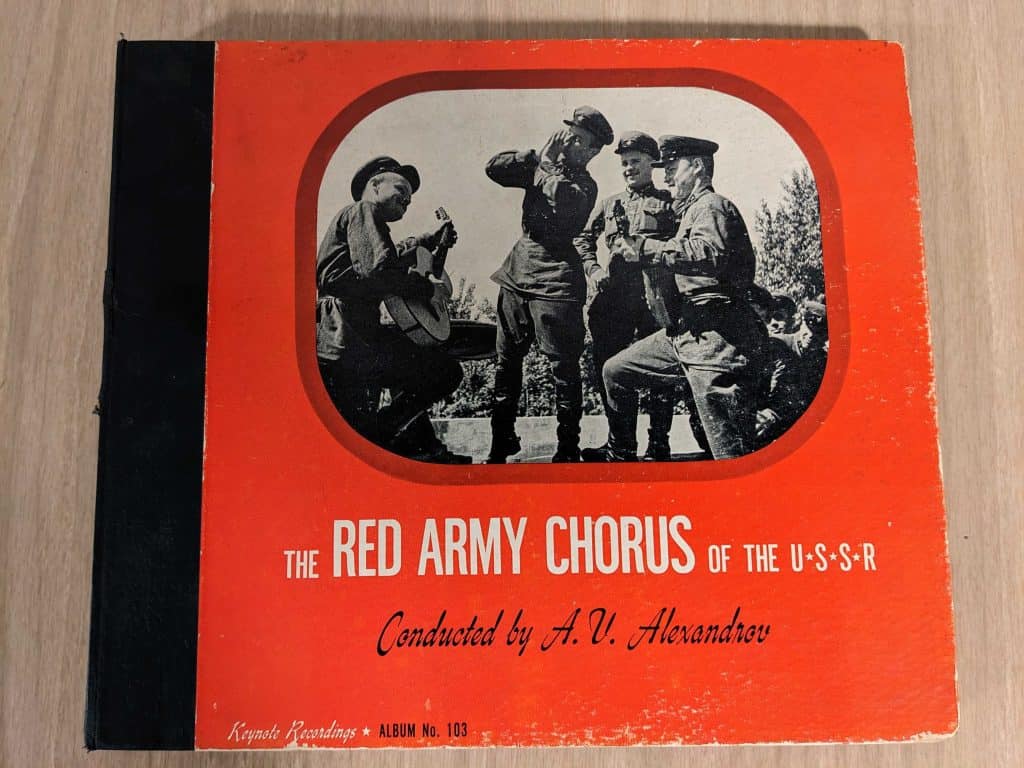
Opening it up showed the lyrics of the songs. It was four 78 records (so 8 songs total)
- From Border to Border
- The Young Birch Tree
- Cossack Song
- If Tomorrow Brings War
- Snowstorm
- Song of the Tachanka
- Meadowland
- Along the Vales and Hills
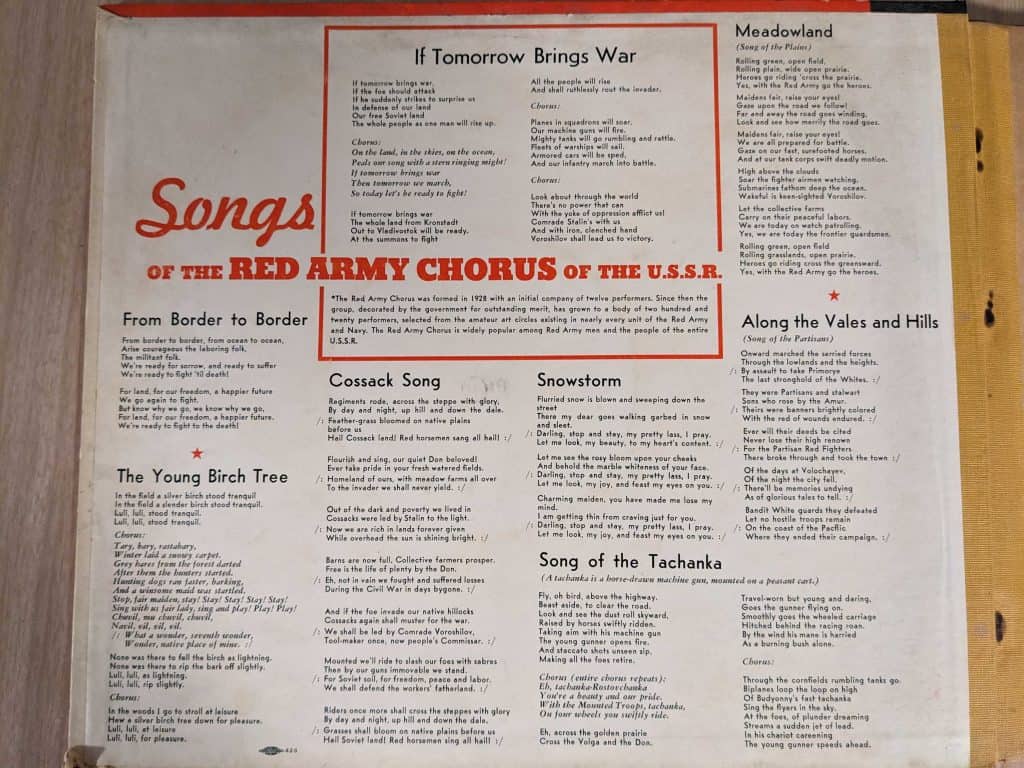
One interesting thing is on the back cover. It has a Restricted Use Notice saying that the record is for non-commercial use on phonographs in homes and cannot be resold for any other use.

It took a while, but I was eventually able to digitize the songs below as an MP3. If you would like the .wav version of the songs, feel free to contact me, and I can send you a copy. Enjoy!
From Border to Border
This song is number K209-A in the set and looks like it was composed by Ivan Ivanovich Dzerzhinsky. The song runs about a minute and 50 seconds. You can download the MP3 here or listen to it below. Sung by the Red Army Choir of the USSR.

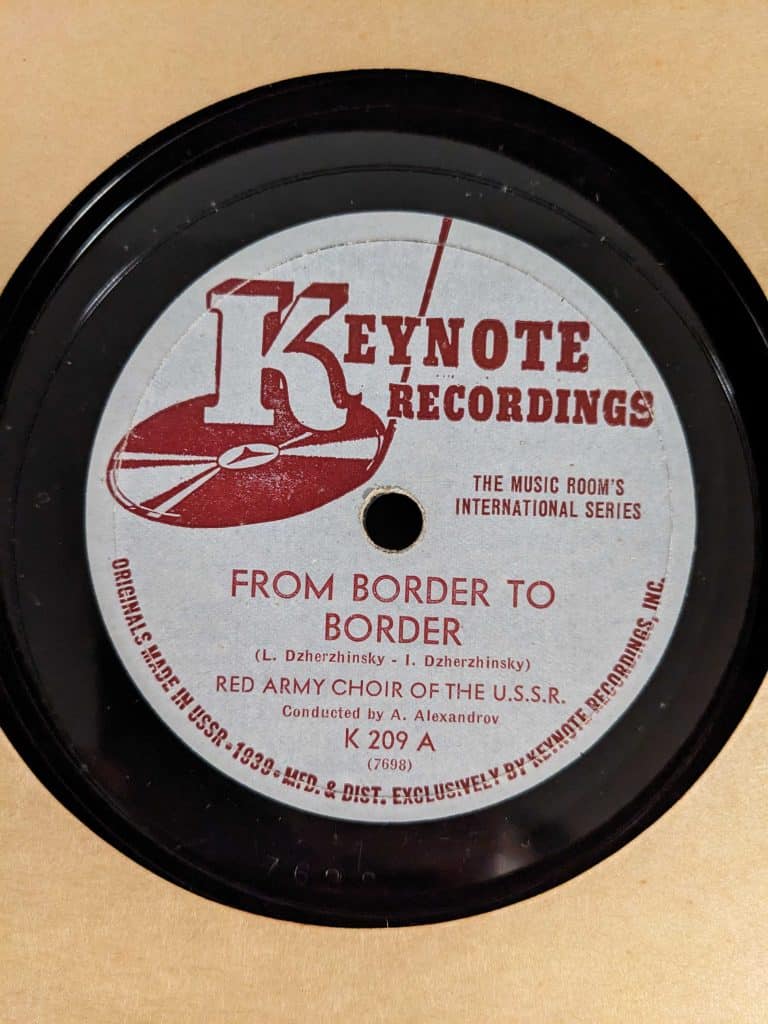
The Young Birch Tree
The Young Birch Tree is song number K210-B. Music is adapted and conducted by Alexander Vasilyevich Alexandrov. Soloist is V. Pankov. You can download the MP3 or listen to it below.
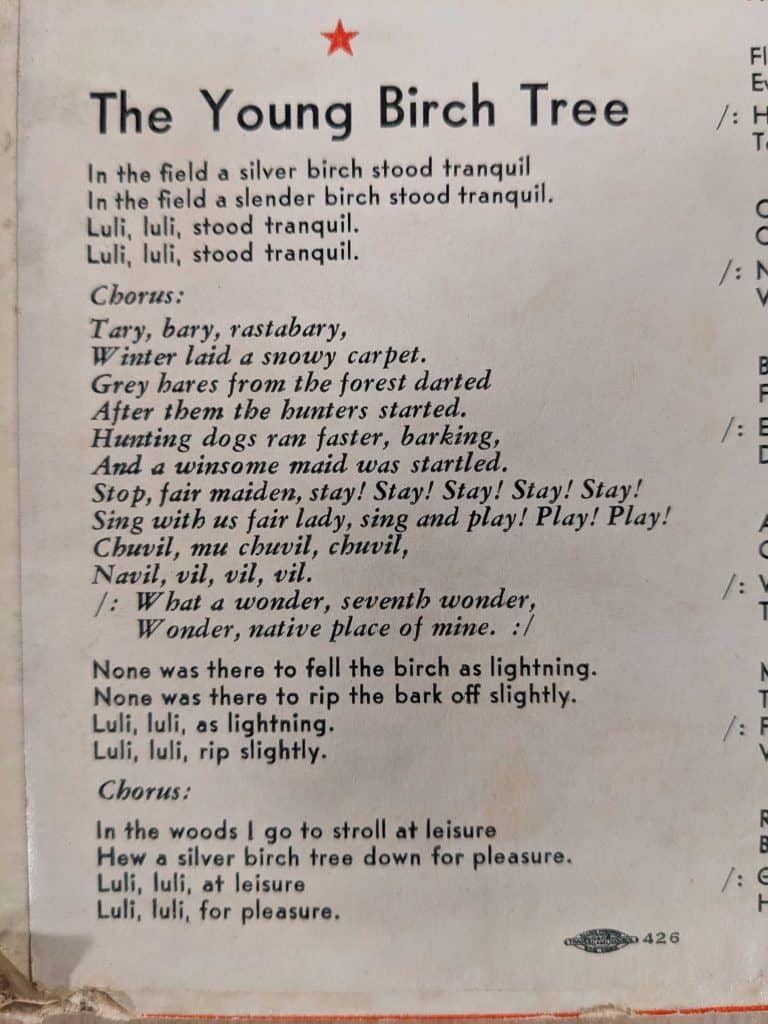
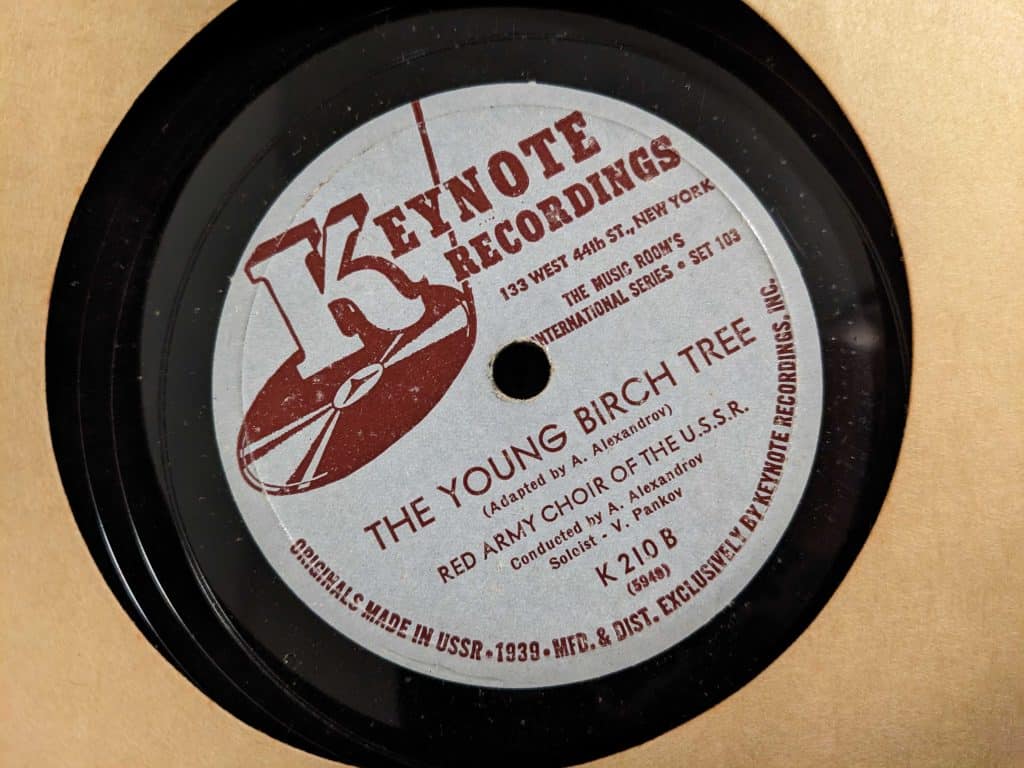
Along the Vales and Hills
Along the Vales and Hills sung by The Red Army Choir of the USSR and conducted (and composed) by Alexander Vasilyevich Alexandrov. It also looks like C. Alimov helped to create it, too. Number K208-A. You can download the MP3 here or listen to it below.
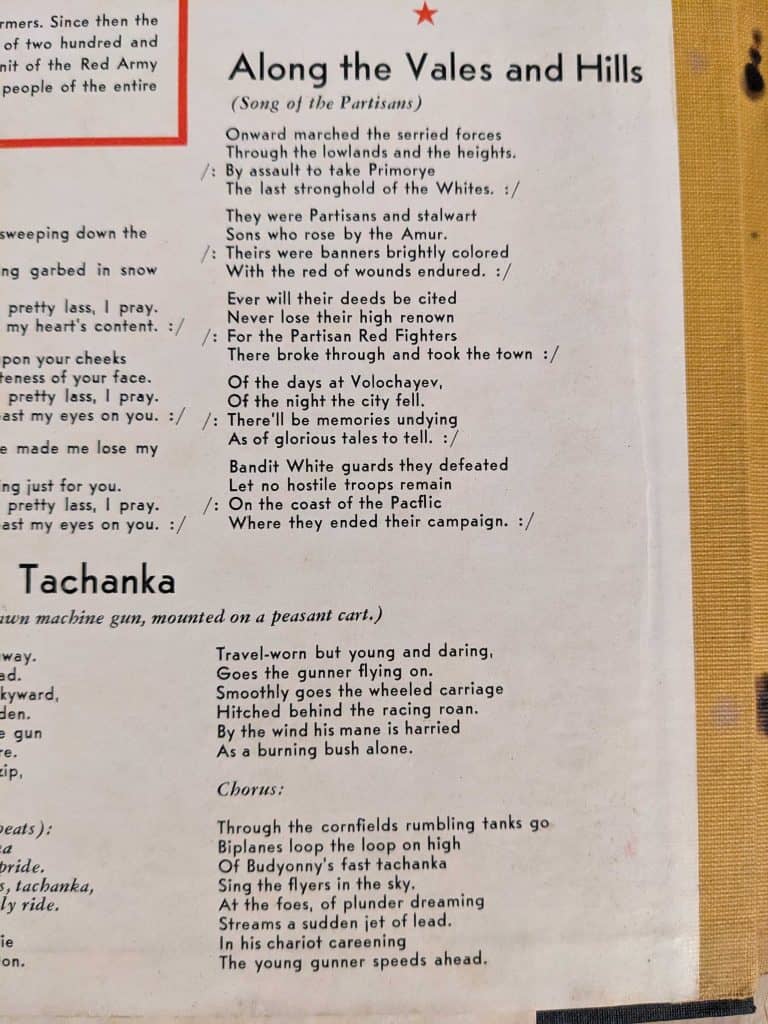
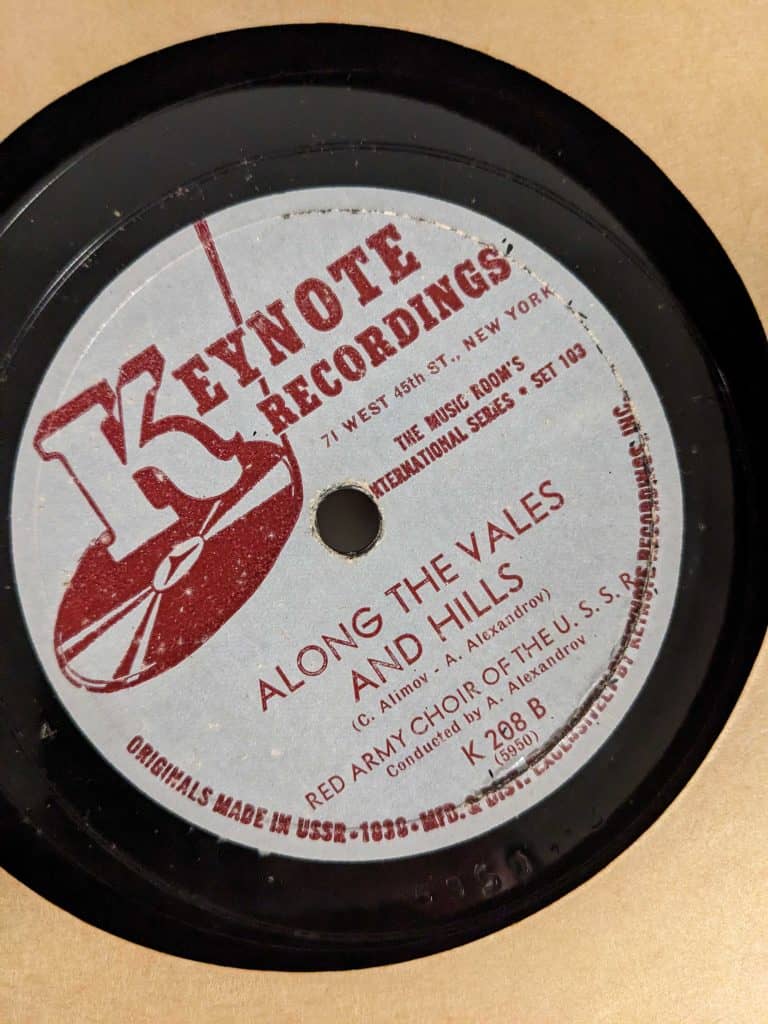
Cossack’s Song
Cossack Song (or Cossack’s Song) is sung by The Red Army Choir of the USSR and conducted by Alexander Vasilyevich Alexandrov. Composed by Ivan Ivanovich Dzerzhinsky. Song number K209-B. You can download the MP3 here or listen to it below.

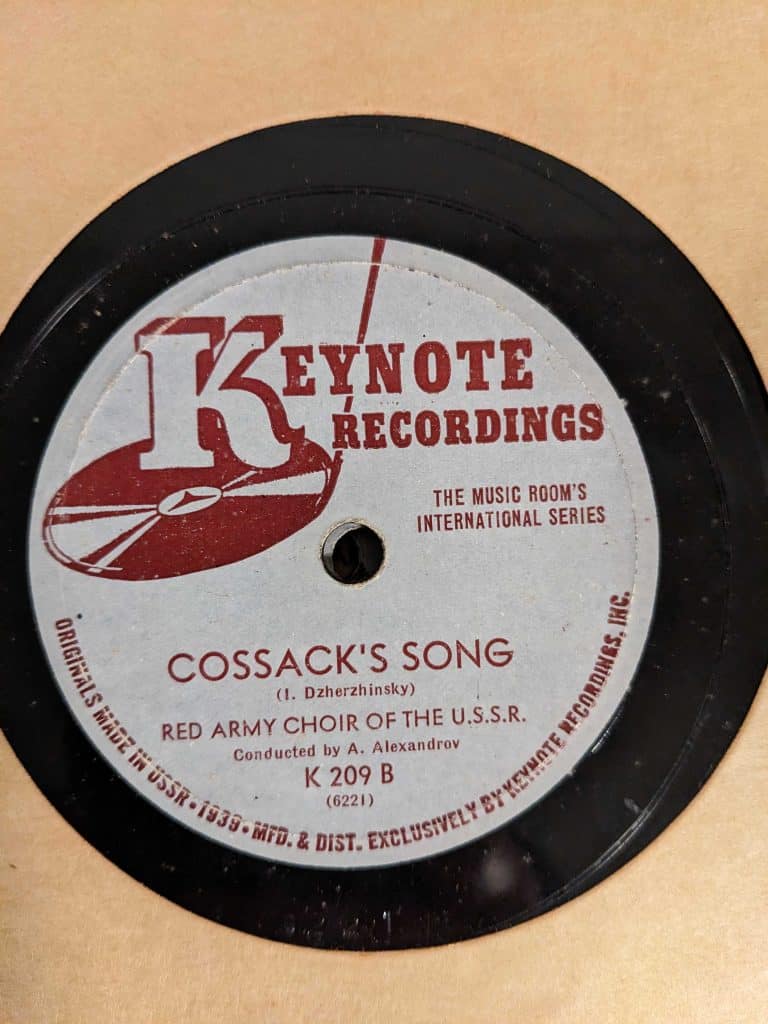
If War Breaks Out Tomorrow
If War Breaks out Tomorrow (or If Tomorrow Brings War). Song number 201-A. sung by The Red Army Choir of the USSR and conducted by Alexander Vasilyevich Alexandrov. Composed by Dmitry Pokrass and Daniil Pokrass (they were brothers), as well as Vasily Lebedev-Kumach.
The lyrics note that the Red Army Chorus of the USSR was created in 1928 with 12 performers. It has won many awards and now has 200 performers coming from both the Red Army and the Red Navy.
You can download the MP3 here or listen to it below.
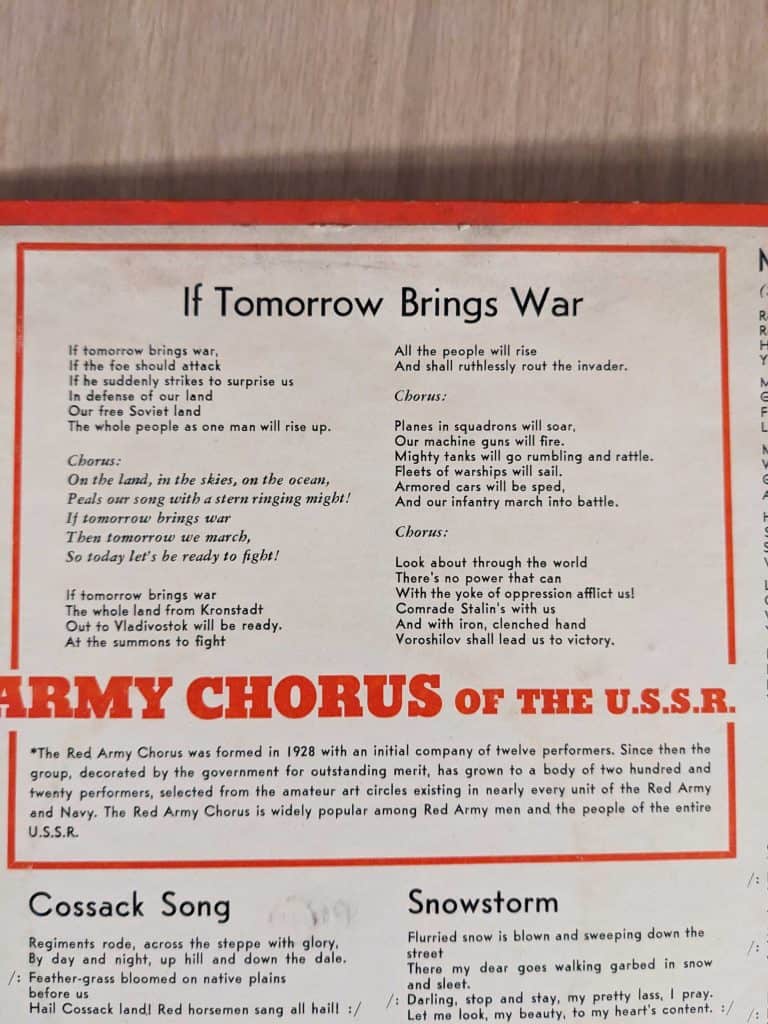
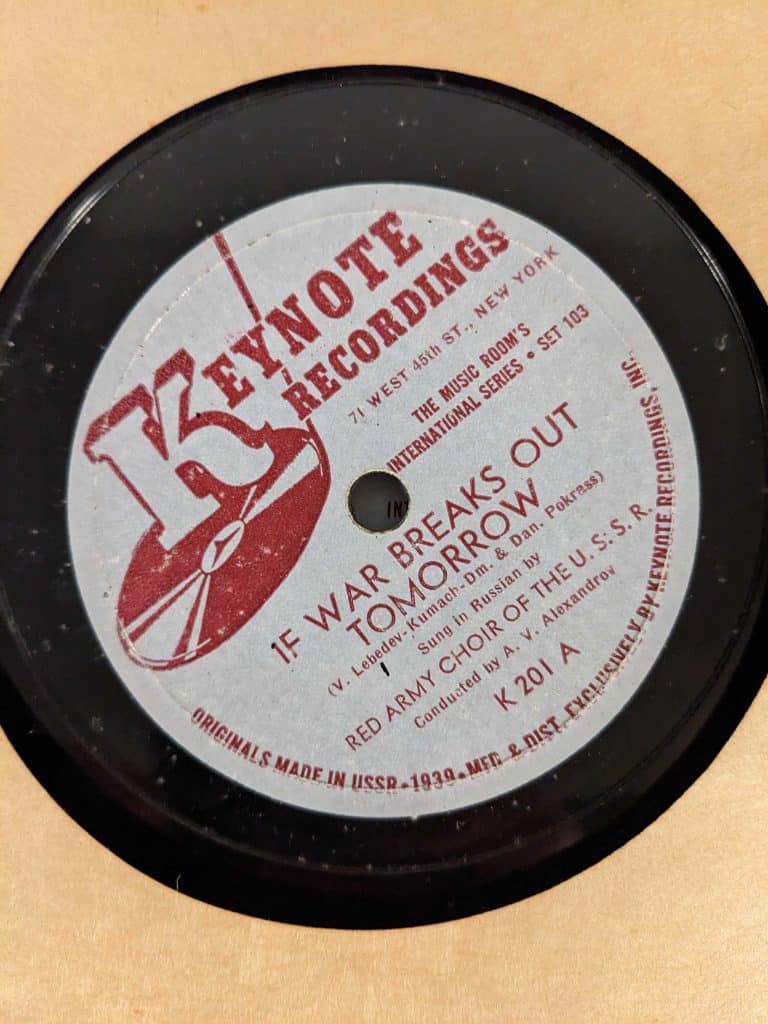
Meadowland (Song of the Plains)
Meadowland (Song of the Plains) is number K208-A. Sung by The Red Army Choir of the USSR and conducted by Alexander Vasilyevich Alexandrov. The song was composed by Viktor Gusev and Lev Knipper.
You can download the MP3 here or listen to it below.
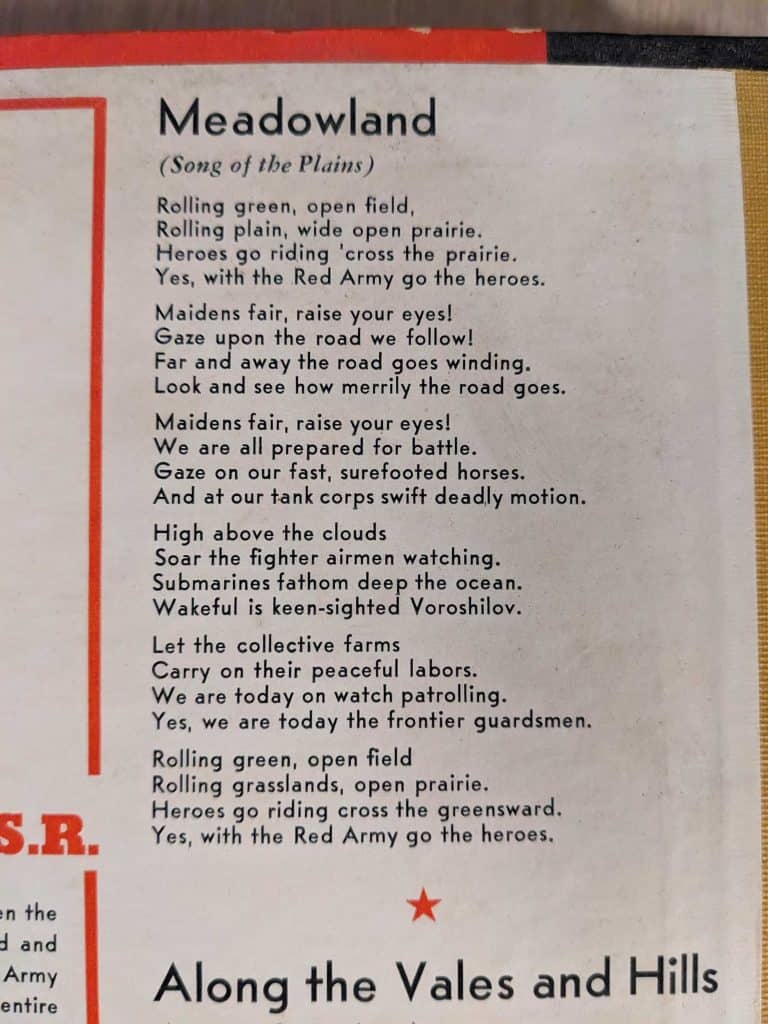

Snowstorm
Snowstorm is number K210-A. Sang by The Red Army Choir of the USSR and adapted and conducted by Alexander Vasilyevich Alexandrov. Soloist is V. Pankov.
You can download the MP3 or listen to it below.
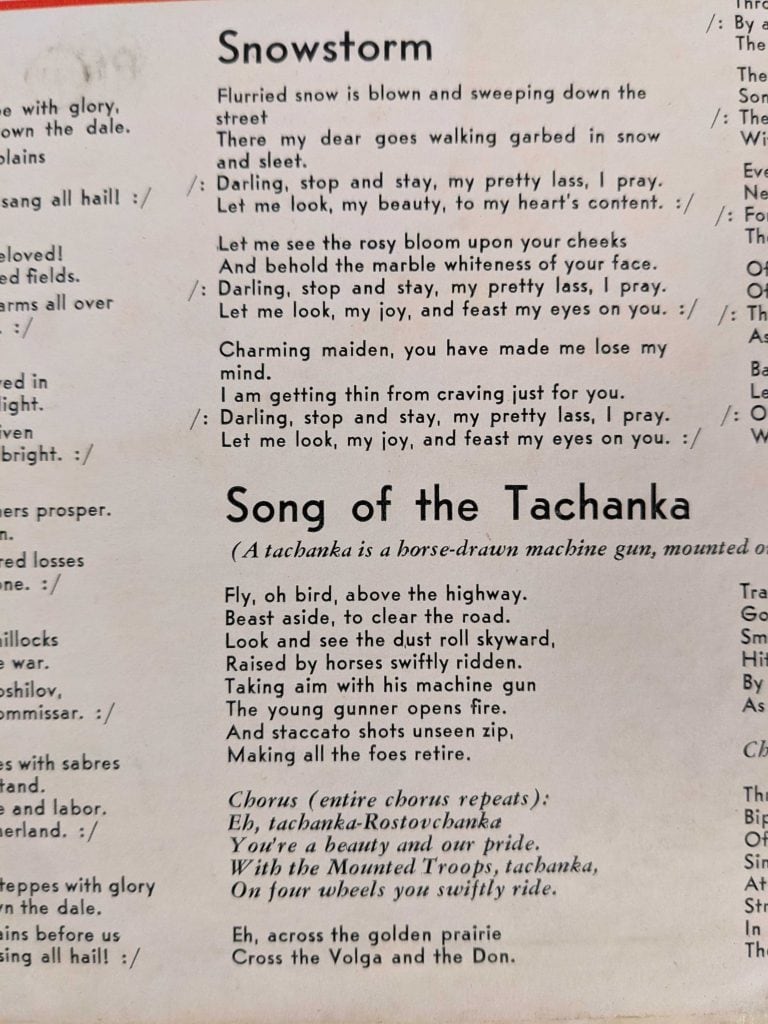
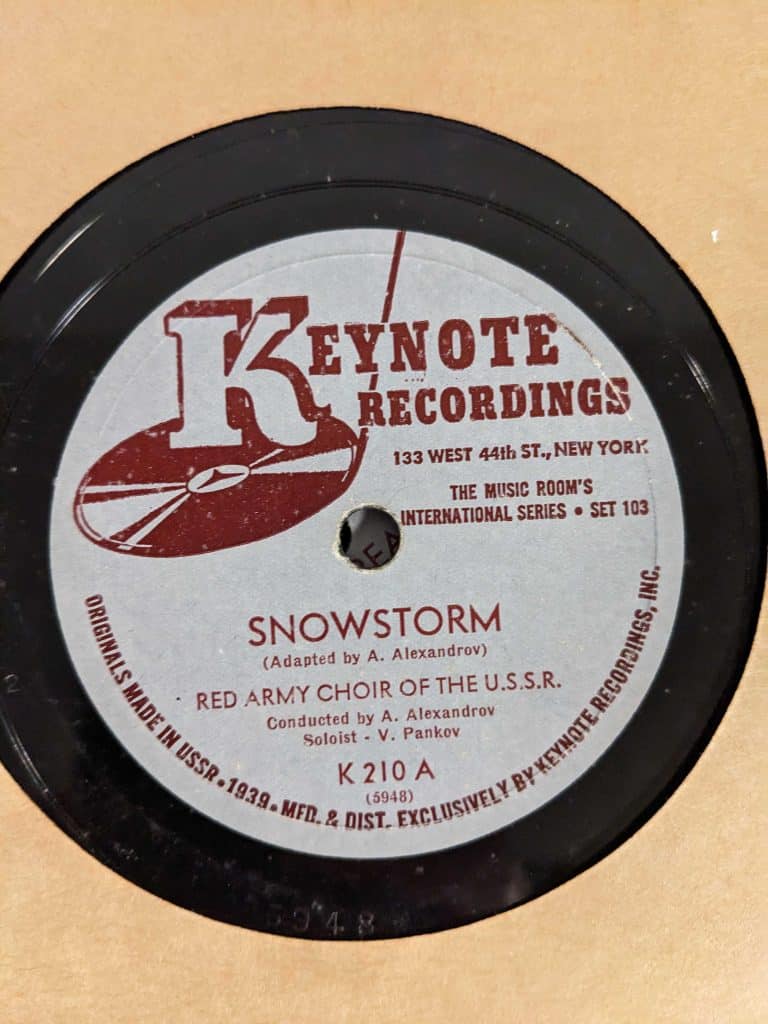
Tachanka
Tachanka is number K201-B. Sung by The Red Army Choir of the USSR and conducted by Alexander Vasilyevich Alexandrov. Lyrics by Mikhail Ruderman and composed by Konstantin Listov. A tachanka is a horse-drawn machine gun, mounted on a peasant cart.

According to Wikipedia, there are a lot more verses and/or the lyrics are a bit different depending on how translated. You can download the MP3 here or listen to it below.
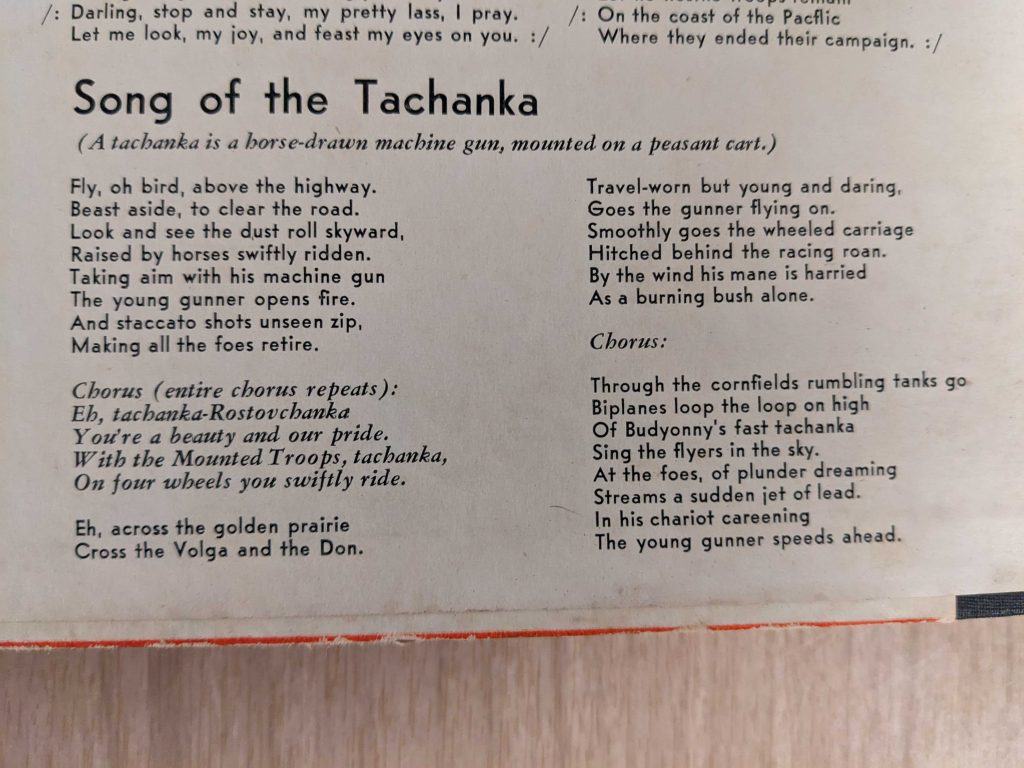
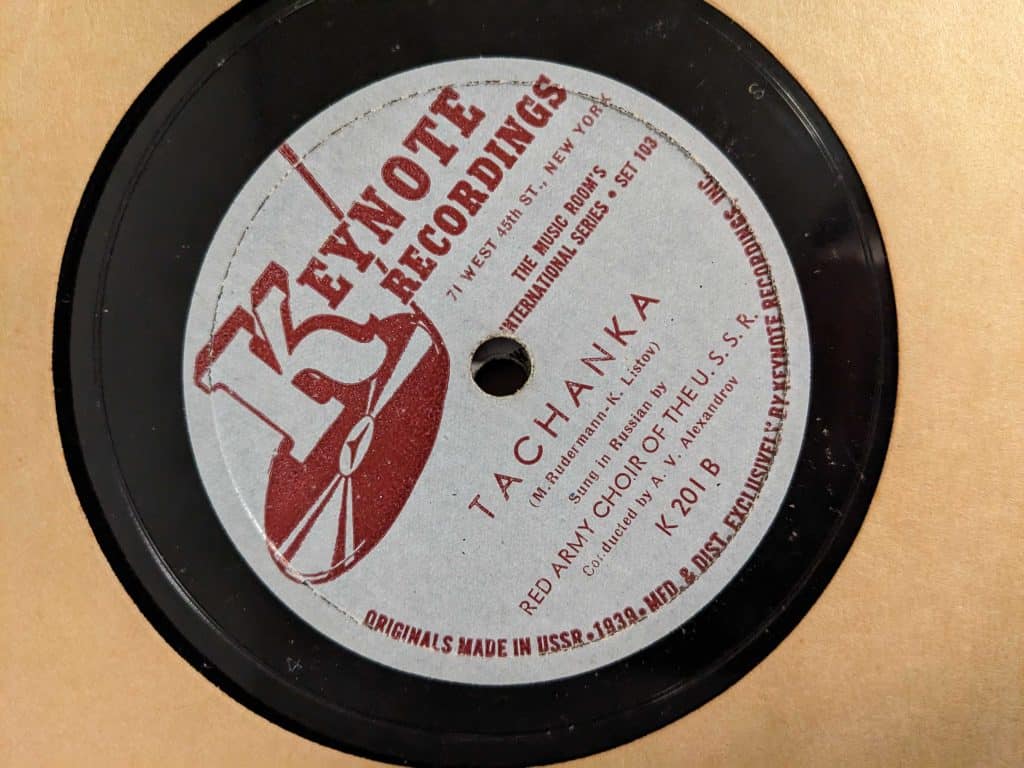
From Kiev to Lubin
This is a single record that I also bought at the same time. It is number K213-B and is sung by the Ukrainian State Choral Ensemble. I’m not sure of the lyrics, though it appears to be a Ukrainian Folk song.
You can download the MP3 here or listen to it below.

The Internationale
The Internationale is a left-wing song used by various social and communist movements. It was composed by Pierre De Geyter. This is number K213-A and is sung by the Bolshoi Theatre Chorus and Orchestra. It looks like the group associated with the Bolshoi Theatre at the time they sang it.
You can download the MP3 here or listen to it below.

Forward to Victory (Charge of the Tanks)
This was also part of the collection I purchased. Though this doesn’t appear to be Keynote Records. Instead, it is Forward to Victory (Charge of the Tanks). Number 6309B. Taken from the film The Red Tanks and sung by the Moscow Military Chorus (courtesy of Artkino Pictures). The Pokrass brothers composed it. It’s essentially a single from the movie’s soundtrack.
Artkino Pictures was the official distributor of Soviet media (like movies and music, etc) in North America between 1950 to 1980. See The Unspooling of Artkino: Soviet Film Distribution in America by James Krukones (2009) for a treatment of this company.
The Red Tanks, or Tankisty, was a movie made in 1939. You can find the full film on YouTube here.
You can download the MP3 here or listen to it below.
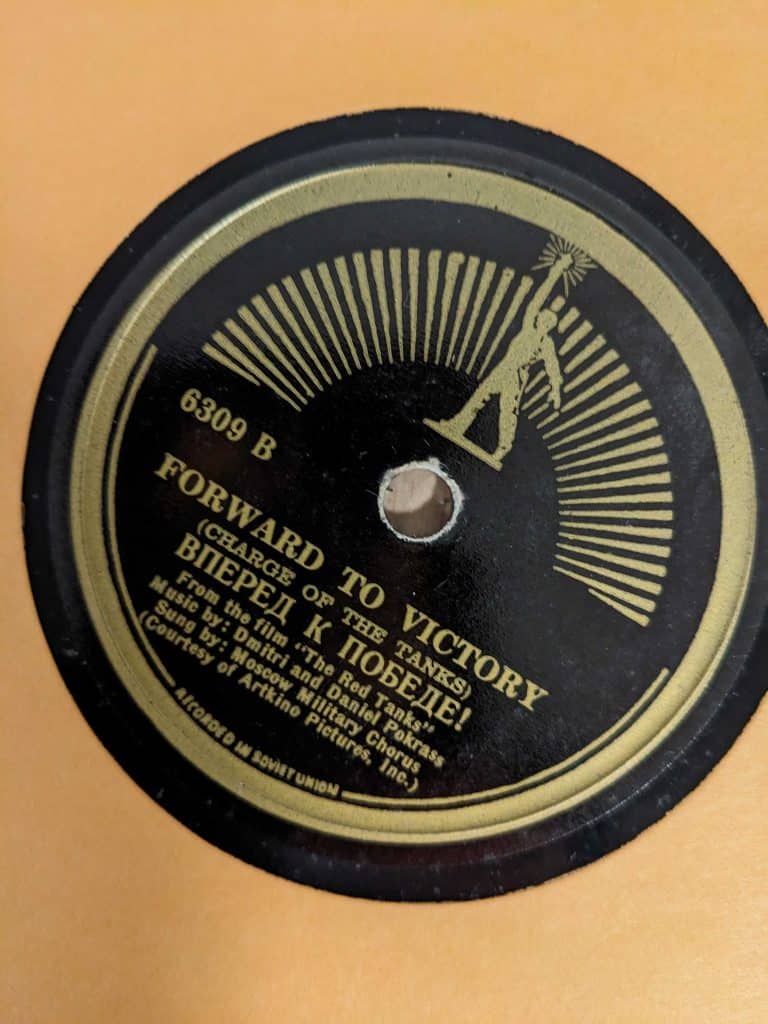
Song of the Fatherland
Song of the Fatherland, number 6309-A. Sung by the Moscow Military Chorus (courtesy of Artkino Pictures). A single from the film, One Day in Soviet Russia, was produced in 1941. The film is essentially a propaganda piece to help garner pro-Soviet sympathy after Germany invaded it. It was narrated by Quentin Reynolds, a journalist who was very much anti-communist in the 1950s.
You can download the MP3 here or listen to it below.
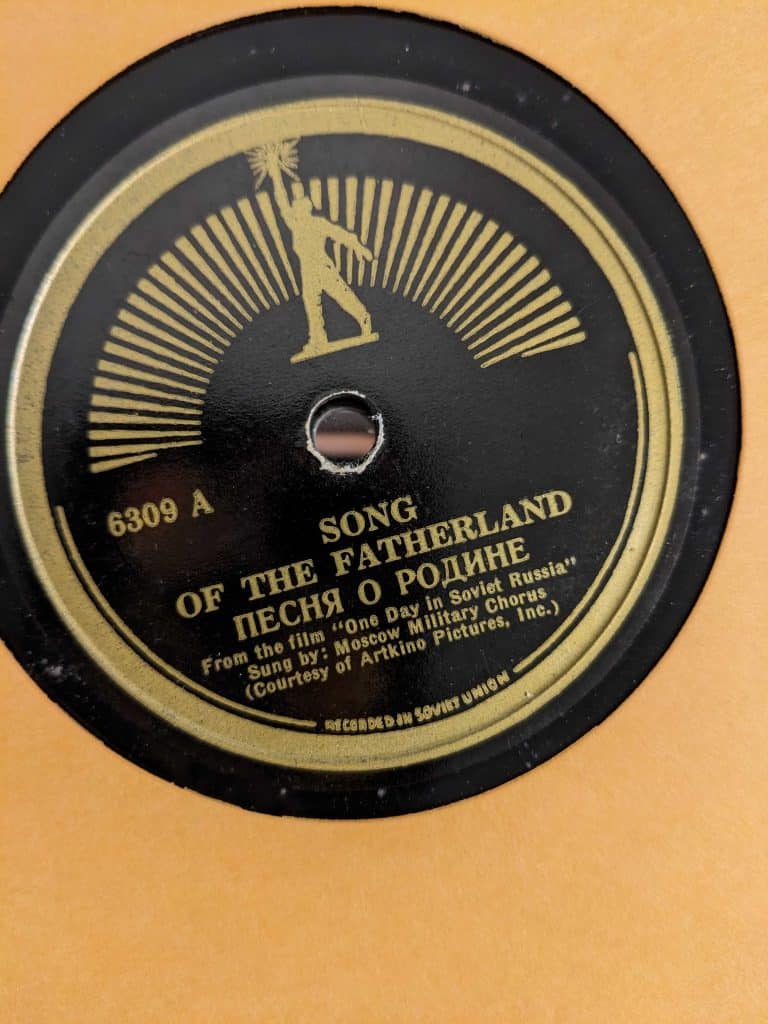
The Internet Archive
The Internet Archive has Along the Vales and Hills, Snowstorm, From Border to Border, Cossack’s Song, The Young Birch Tree, and Meadowland available for download too. So if the MP3s aren’t to your liking, you can find more copies there.
The archive also includes other Keynote Record songs like The Clouds Fly High and Blue Night. All were sung by The Red Army Choir of the USSR and conducted by Alexander Vasilyevich Alexandrov.
I’ve embedded both of those below.
Blue Night
Clouds Fly High
